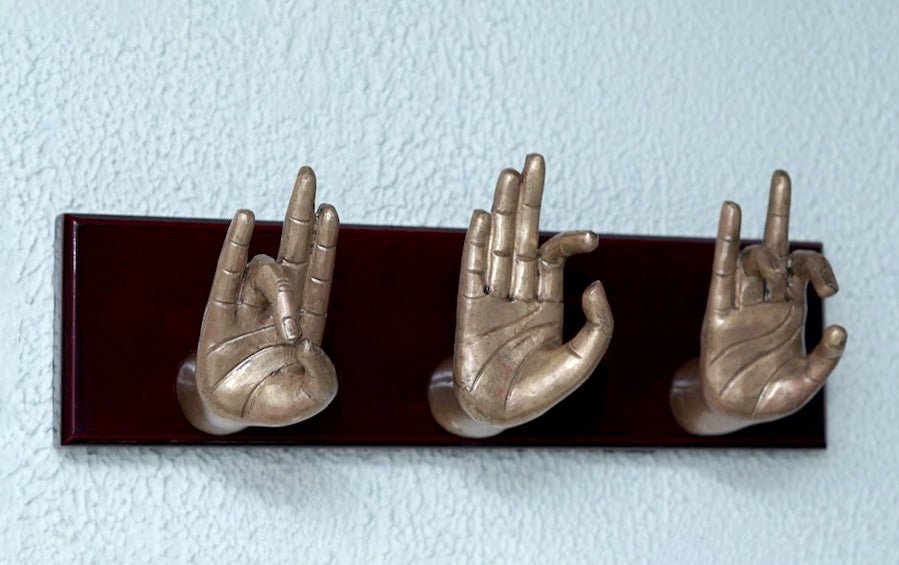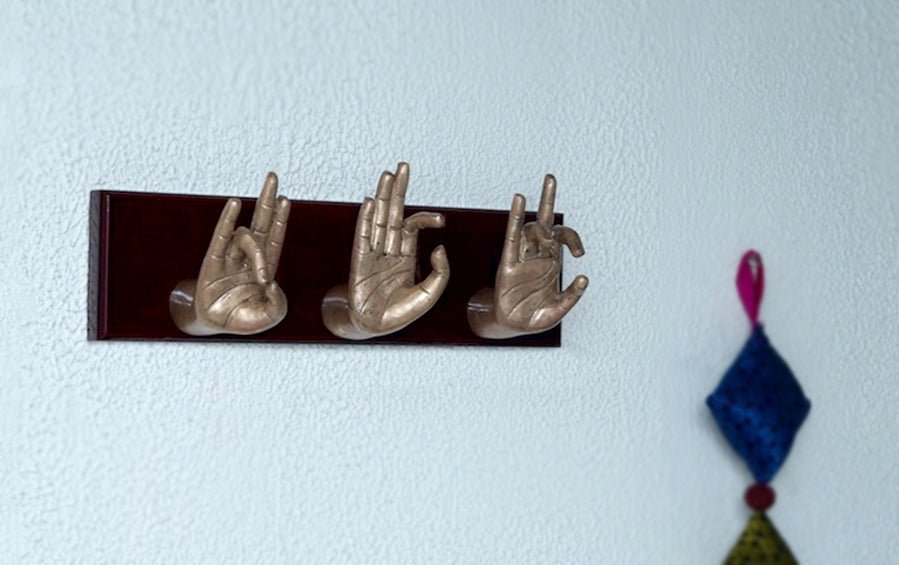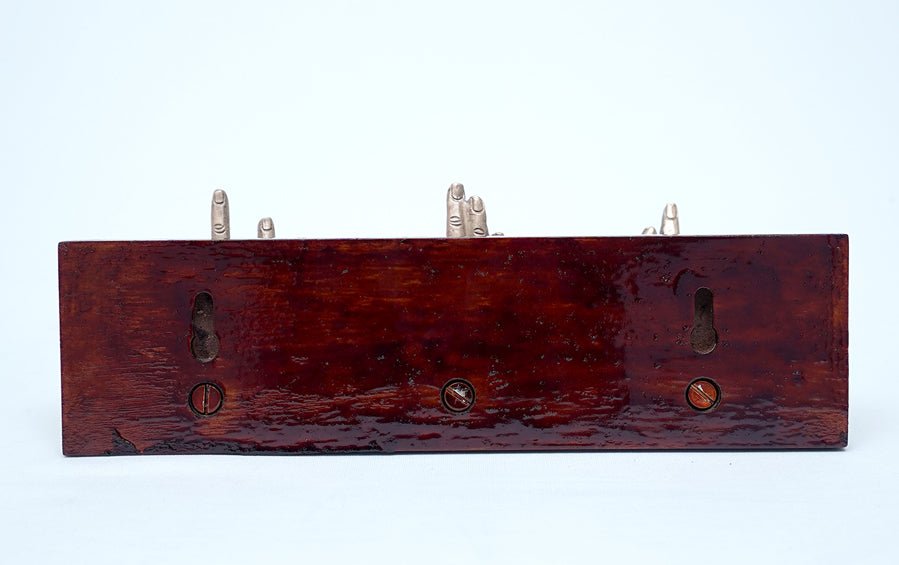Dance Hasta Mudra | Set of 3 | Mayura, Arala, Shukatunda
Design Inspiration - (Mudras from Left to Right in the Picture) -
Mayurakhyo Mudra (a peacock’s neck) - Mayura is the fifth mudra of the 28 Single Hand Mudras (Asamyutta Hasta) as described in the Abhinaya Darpana. It depicts a peacock’s neck, A Creeper, A Bird, Vomiting, Separating the hair locks, Applying Tilak on the forehead, Dispersing water of the river, Something Famous, Discussing the Shastras.
Arala Mudra ("Bent" or "Crooked")- Arala is the seventh mudra of the 28 Single Hand Mudras (Asamyutta Hasta) as described in the Abhinaya Darpana. It denotes the drinking of nectar or the sipping of poison, the beauty of a woman, a powerful wind, and the burgeoning of peacock feathers.
Shukatunda Mudra (Parrot's beak) - Shukatunda is the seventh mudra of the 28 Single Hand Mudras (Asamyutta Hasta) as described in the Abhinaya Darpana. “Shukatunda” is used to denote the following: Shukatunda literally means a Parrot’s Beak, A shooting of an arrow, A spear, Remembering one’s Abode, Saying of Mystic things, A violent mood.
Features:
- Hand Mudra | Wall Décor Set of 3 is made of bronze.
- Each hand mudra is elegantly mounted on a solid wood base.
- Ready to hang.
- Ideal to be used as a decorative wall hook to add an ethnic taste to your home.
- Can be considered as a gift option for your loved ones.
- Comes in set of three wall décor.
- It's a unique piece of craft.
- Suitable for Home Décor, Dance School Décor, Office Décor and Gifting purposes.
-
Care instructions: Wipe it with a soft, dry cloth.
About Craft- The Swamimalai bronze icons are made by the artists known as the ‘Sthapathis' of a small village on the banks of River Cauvery - SWAMIMALAI - located seven kms from the Temple Town of Kumbakonam. Swamimalai is famous for South Indian Bronze moorthy making, and the artisans here have been following a tradition that is several centuries old. The Highlight of the moorthy manufacture in Swamimalai is the usage of the ancient method called the Madhuchishtavidhana or lost-wax method (cire perdue) a skill passed on for generations since the Chola period. A science that finds reference in the Rig Veda & Silpa Sasthira, this age-old method spells precision, technique and aesthetics while adhering to the firmly laid down standards and principles.





